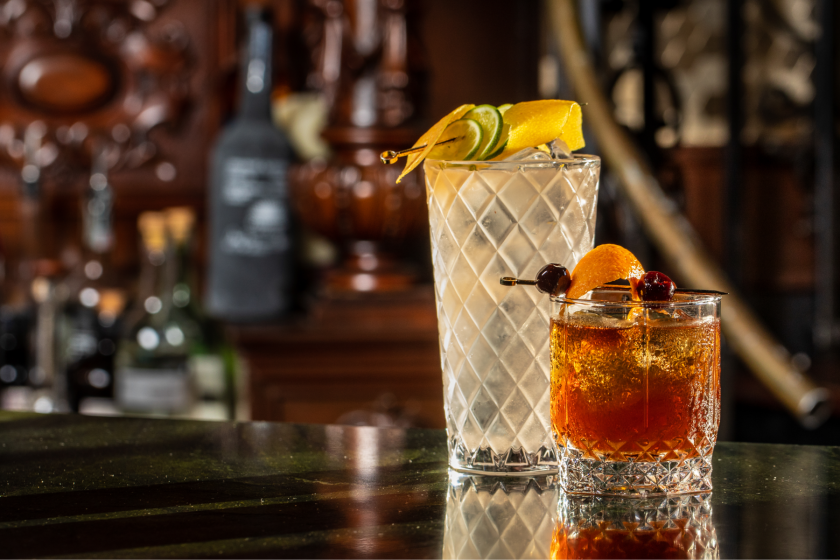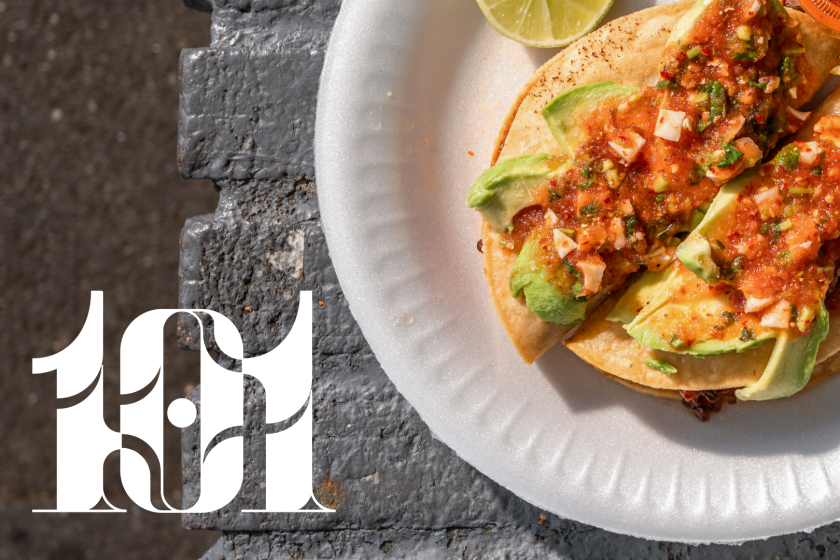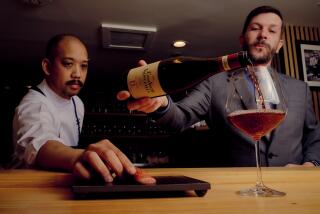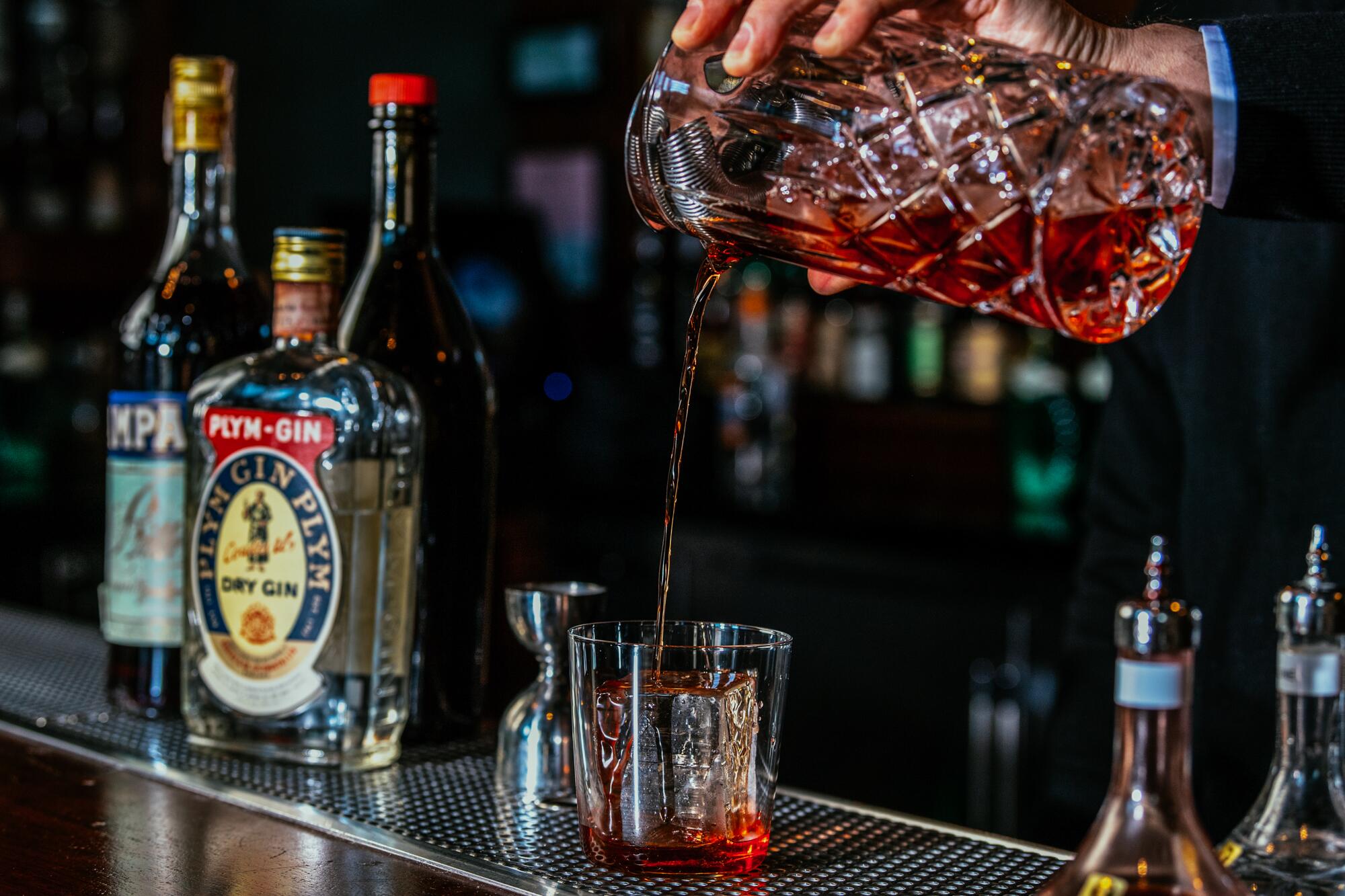
Can a bottle of something special capture a moment? Can a cocktail convey the weight of history?
At Manzke, a Michelin-starred restaurant from Walter and Margarita Manzke, a small team of drinks professionals — bar director Shawn Lickliter and bartenders Kyle Bailey and Blake Antrobus — have built a jukebox time machine of rare vintage spirits and aged liqueurs, sourced from around the world and across the decades. The result is a drinks program that’s ephemeral and ever-changing, never to be repeated from night to night, making each visit like a moment trapped in time.
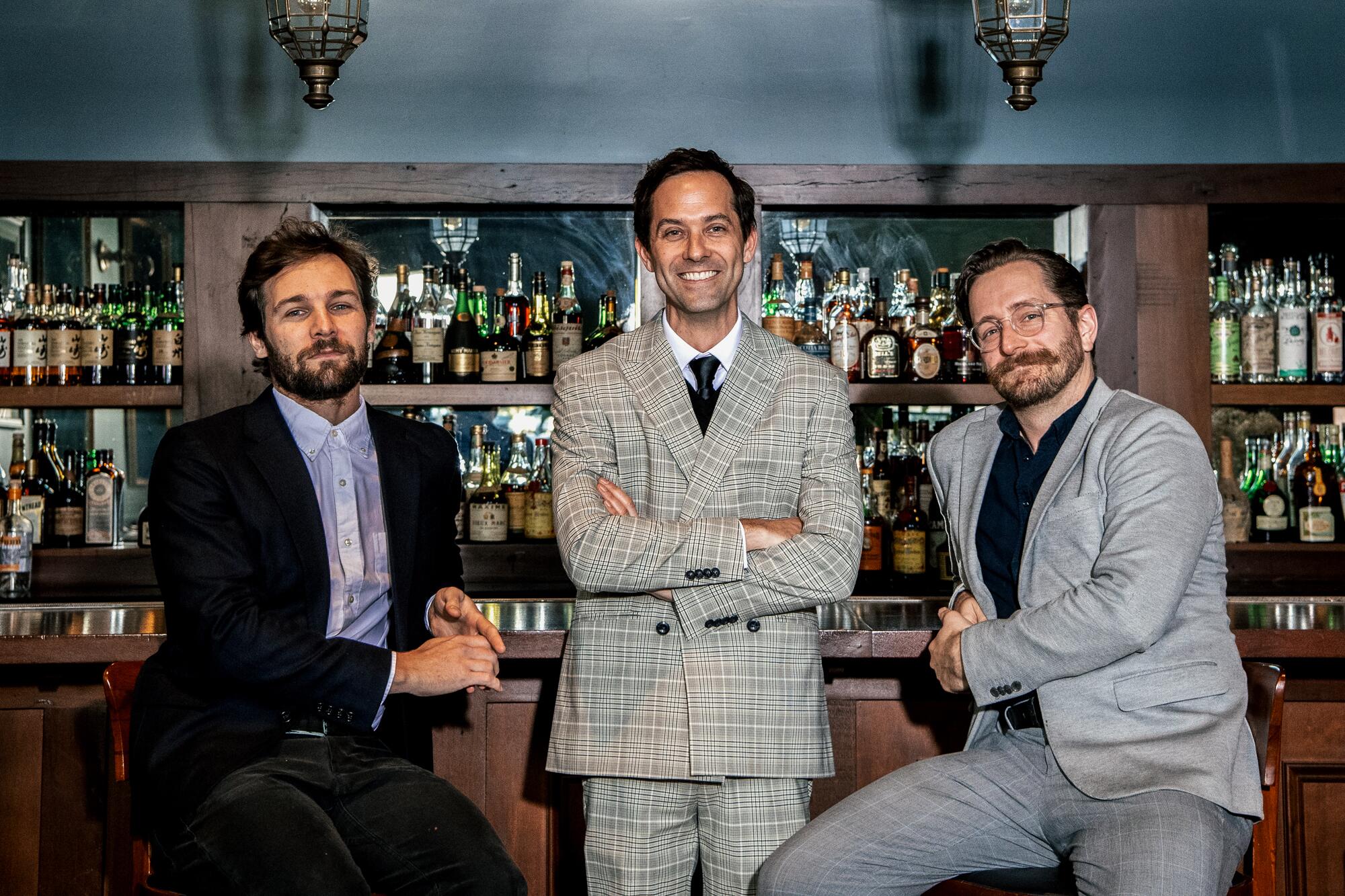
“We cherry-pick spirits dating back to the 1930s,” says Lickliter, who since 2014 has helmed the drinks programs across the Manzkes’ portfolio of restaurants in Los Angeles and the Philippines. Manzke — which also recently received the Michelin guide’s Exceptional Cocktails award — carries more than 100 bottles of rare and vintage spirits, including whisky, bourbon, rum, vodka, gin and a sweet-shop assortment of liqueurs, fruit brandies and eau de vie. Lickliter has secured cases of various spirits from near and far, and along the way, the bar’s vision has taken shape.
Feeling thirsty? Here are the 10 best places around Los Angeles for drinks.
You can drink history at Manzke straight up — enjoying, say, 1-ounce pours of 1970s Appleton Estate white rum from Jamaica or a 1950s Bisquit 3 Star cognac — served neat in glasses from Bennuaine, designed in Los Angeles and hand-blown in Europe in titanium crystal. Originally designed for whiskey connoisseurs, these glasses are for, say, a tot of English Gilbey’s gin dating back to the first term of Prime Minister Harold Wilson, or an ounce of Drambuie old enough to use its AARP discount. That would be cool enough on its own, but the team at Manzke is actually building cocktails out of this stuff, creating singular drinks from the raw drinking materials of yesteryear.
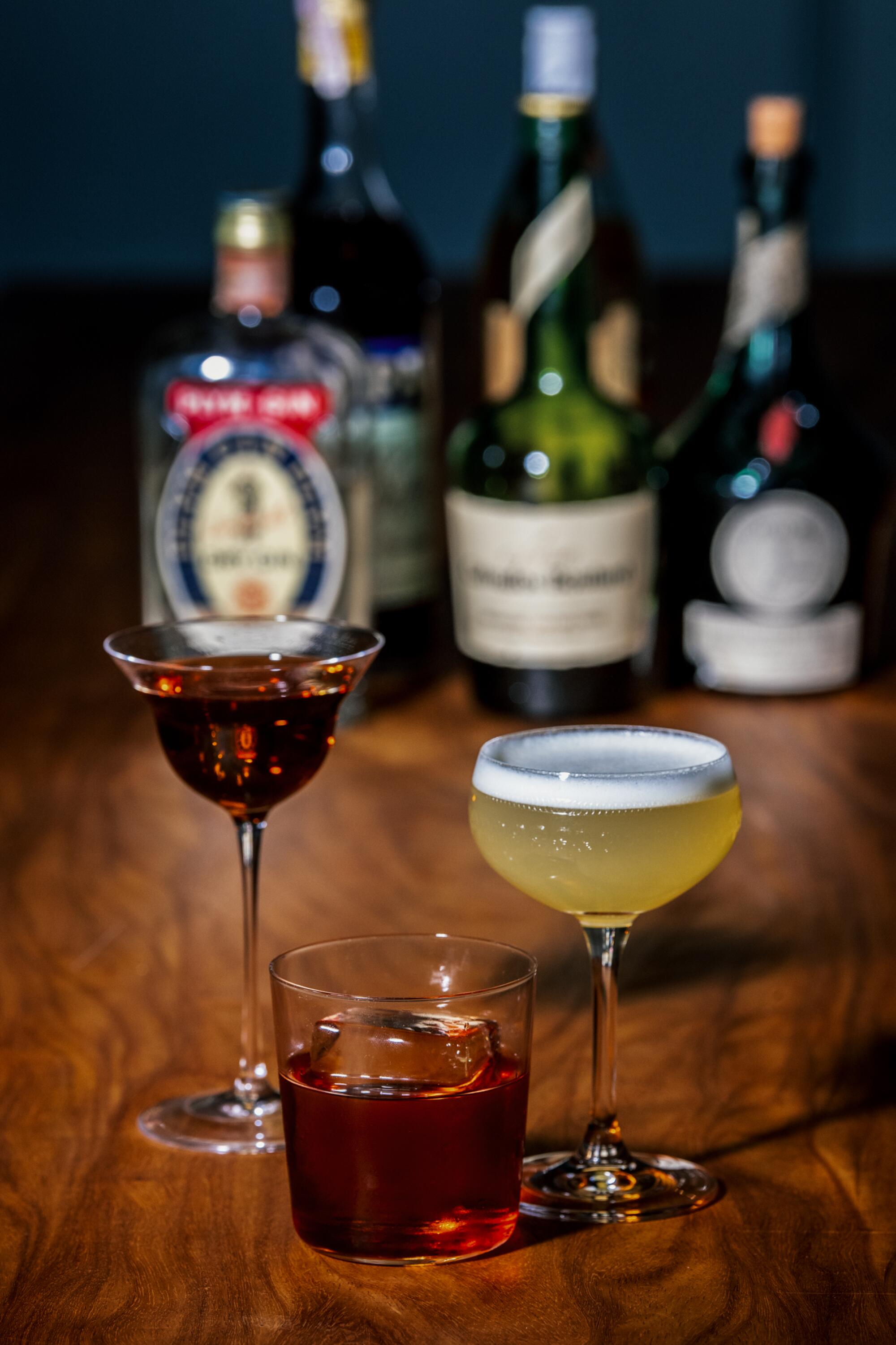
“People will say if it’s older, it’s better, but that’s not necessarily true,” says Lickliter, who gets asked often for an elevator pitch of the bar’s concept. “What you’re tasting is the history of a spirit — who was distilling and how they were making it at a given time.” And in a sense, this is true. It’s not like wine; something else happens, different from the interaction of oxygen and fermented grape juice across the decades that makes vintage wine so sought-after. Fans of vintage spirits, or those looking for an education, are instead being treated to a distillation of the past This makes it possible to taste, for example, how gin distilleries approached florality and spice in the 1950s, or how bourbon makers approached aging and coloring generations before their work was cultishly followed by whiskey zealots.
For drinks geeks and history buffs, there’s nothing else quite like it — dozens of these rare old bottles, each with a specific provenance and story behind it. But even for casual drinkers, there are noticeable changes that occur in an aging bottle of liquor, readily tastable by anyone, regardless of how deep down the rabbit hole your interests might care to burrow.
Most bars source their liquor from a distributor, with the bottom line in mind; building a different sort of program like this one carries with it plenty of risk. Vintage hunters like Lickliter look for higher-proof bottles whenever possible, because evaporation over the decades will actually cause the drinking proof of a given spirit to come down slightly. It’s not always a good thing: Bottles might also lose their fill, with fully sealed products now only containing liquid up to the “shoulder” of the bottle. Some bottles will be oxidized, yielding metallic flavors; other bottles will taste “cooked,” in Lickliter’s words, with liqueurs and fruit-forward spirits especially prone to such effects, yielding a liquor that tastes more like syrup.
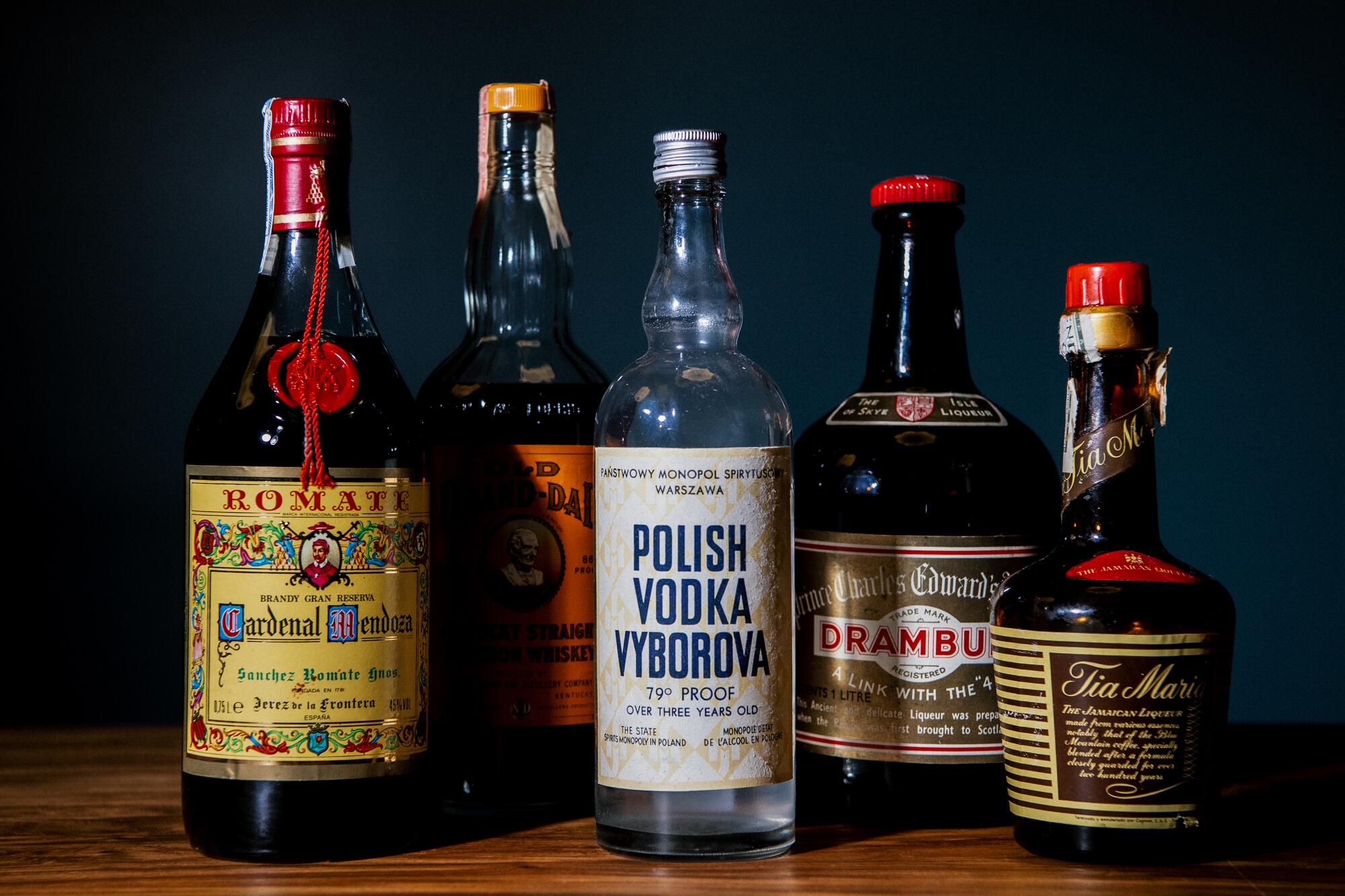
Significant variation between bottles of the same spirit is common, and this requires the bar team at Manzke to be vigorous with their quality control, tasting every bottle served and adjusting ratios and recipes for their cocktails on an ongoing basis. “Every time we open up a new bottle, it triggers new recipe development,” says Lickliter.
The work to source these bottles at Manzke is something like a treasure hunt, and Lickliter lights up when asked about tales from the field. “In the beginning, the idea was simple: Let’s do something you never see at Michelin restaurants,” he recalls. “Let’s fill up a cabinet with old vintage bottles — not just Chartreuse or bourbon but the really rare stuff, the spirits you never see.”
If you’re searching for the essential food of L.A., let our critic’s 2022 restaurant list be your guide. Find the best vegetarian, Italian, Mexican and more.
To get there, he has worked with wine brokers, hunted rare and discarded bottles at widowed estates, engineered fruitful trades with friends within the thriving Los Angeles rare-spirits community, and fought other would-be buyers in the cutthroat world of online auction sites. Much of what Lickliter has sourced for Manzke originates in the United Kingdom, where the trade in aged spirits (particularly Scotch whisky) has long found a home in the upscale bottle shops in and around London’s Soho neighborhood.
Building cocktails out of historic spirits like this might almost seem like a waste; the more logical impulse is to drink them neat, pondering the rarity of it all like a kind of liquid museum piece.

The Negroni at Manzke offers proof of concept. Extant in one form or another for at least a century, the Negroni is one of the most treasured classic cocktails: equal parts Campari, gin and vermouth (at least traditionally — there are endless riffs), garnished with an orange peel. At Manzke, the Negroni employs Plymouth gin from Devon, England, distilled in the 1960s; Campari from just outside Milan, Italy, distilled in the 1970s; and contemporary Vermouth di Torino. It costs $75, as much as one might ever want to pay for a single cocktail in any setting.
“I source my vintage Campari from bottlings originally sent to Spain,” explains Lickliter. “There’s more fruit to it, almost a rhubarb note, and it’s not nearly as sweet as the current stuff.” Nothing about it tastes like a normal Negroni, and it looks different too; the characteristic red of the Campari has faded into something like an aqueous ochre. “That’s because the cochineal has faded,” Lickliter tells me, referencing the prickly pear insect from South America from which the famous red color in Campari was originally extracted (it was replaced with food dye across most bottlings of Campari in the early 2000s).
The gin too is different, slightly viscous due to the spirit’s evaporation and concentration across the decades, yet still floral and expressive. It’s not exactly like drinking old wine, yet it sort of is; the Campari’s dominant fruit notes have fallen away, leaving the drinker with tertiary notes of baked fruit and subtle spices, landing somewhere in the balance of subtlety and complexity. The end result is that most paradoxical of drinking experiences: a taste of history, yes, but also so thoroughly modern and of the moment that one cannot help but be struck by its alchemy and the knowledge that it only exists here, at this one bar off West Pico Boulevard.
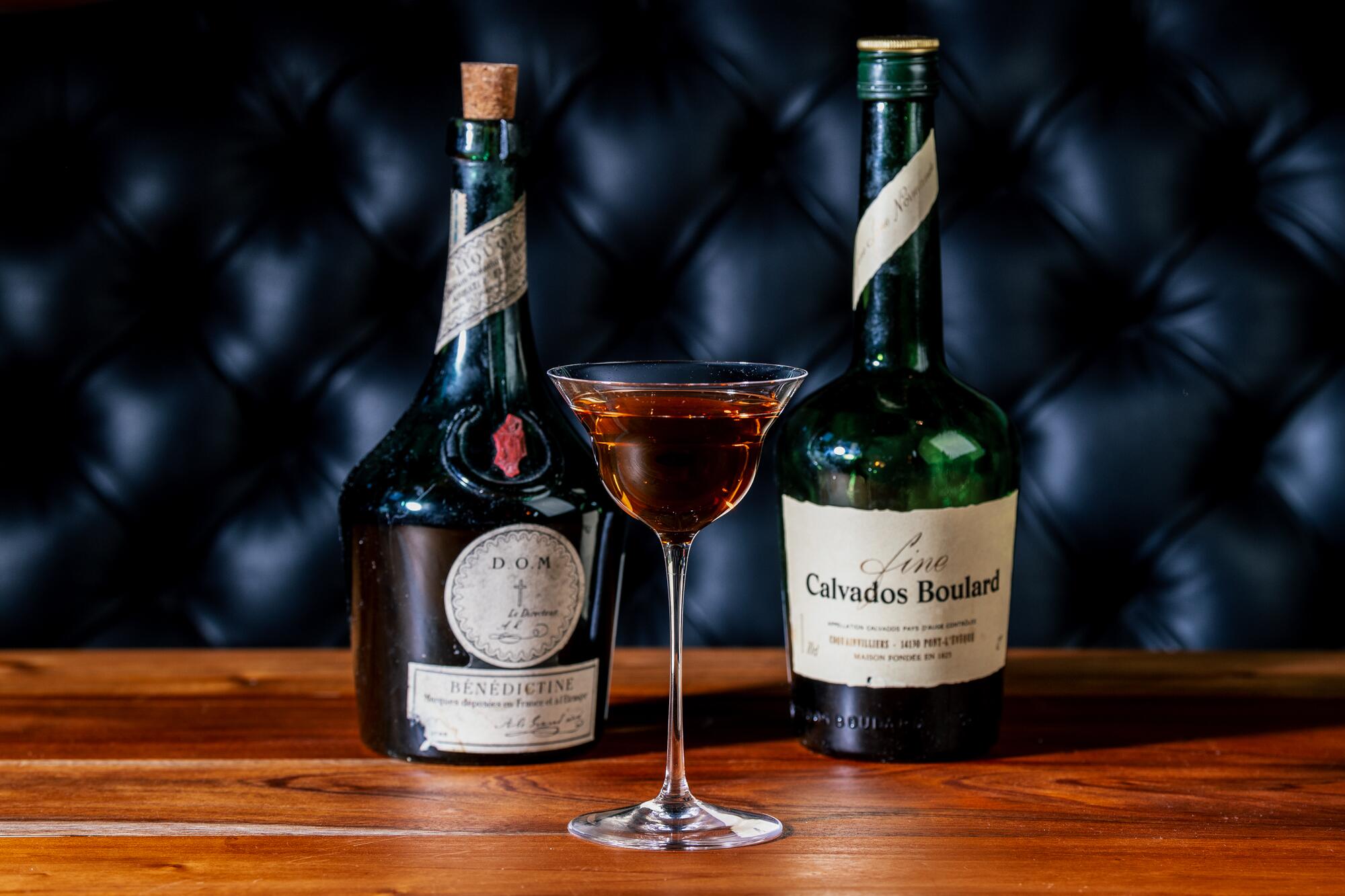
Other classic cocktails are given the vintage treatment as well, including an espresso martini made with Tia Maria from the 1970s, and a Widow’s Kiss built around vintage calvados and concentrated old Bénédictine liqueur. The menu also includes a concise and oft-changing collection of what the bar calls “farmers market driven” cocktails — on a recent visit this included a drink called, simply, “Carrot,” made with mezcal, an Austrian carrot eau de vie, the Italian aperitivo-hour bitter hero Aperol, and spice box flavors of sour orange, ginger and cardamom.
It’s worthwhile to enjoy one of these fresh drinks when first seated at Manzke, where all eyes eventually fall upon an antique cabinet, mounted up and to the left of the bar. This was home to the bar’s original collection of vintage spirits, during the six months or so of development after Bicyclette began service downstairs and before Manzke opened on the upper floor. It didn’t take long for the bar’s collection to spill out of the cabinet’s confines, and vintage bottles now occupy every niche of Manzke’s expansive back bar. But the cabinet serves as a thematic hook, where you’ll find some of Lickliter’s most coveted vintage spirits, including an enviable collection of midcentury bourbons.
Bottles of Van Winkle and Old Forester in the bar’s collection are the stuff of obsession and wild spending by the curious subculture of rare whiskey enthusiasts, with a ripping hot online market in which bottles of bourbon from yesteryear are traded like liquid crypto (as opposed to illiquid crypto, which is increasingly the case). Vintage bourbon might get the hype, but the list at Manzke is equally focused on unearthing dusty bottles from across the spirit spectrum: Polish vodka from the 1970s, which appears cloudy in the bottle from 50 years’ rest but still tastes bracingly forceful, or Fernet-Branca amaro from the late 1960s, a concentrated expression of the drink’s famous dark herbal profile.
The bar’s concept, in which cocktails meant for drinking are built with components from yesteryear, implies a sense of impermanence. After all, they aren’t making any more bottles of brandy from 1955. And for Lickliter, this is exactly the point. He’s going to run out eventually; attention from the likes of Michelin only accelerates this reality. “I want this to be an experience we have together at the bar,” he says. “We’ll finish a bottle, and we’ll say goodbye. This is meant to be a moment we had together, where we got to try something special, meaningful and different.”
Time marches on, always thirsty, ready for another round, but you can mark the moments in your life now by reaching into the past, by drinking something otherwise undrinkable, unknowable. It’s not that these bottles get better with time, per se; it’s that the bottles themselves are little liquid time machines.
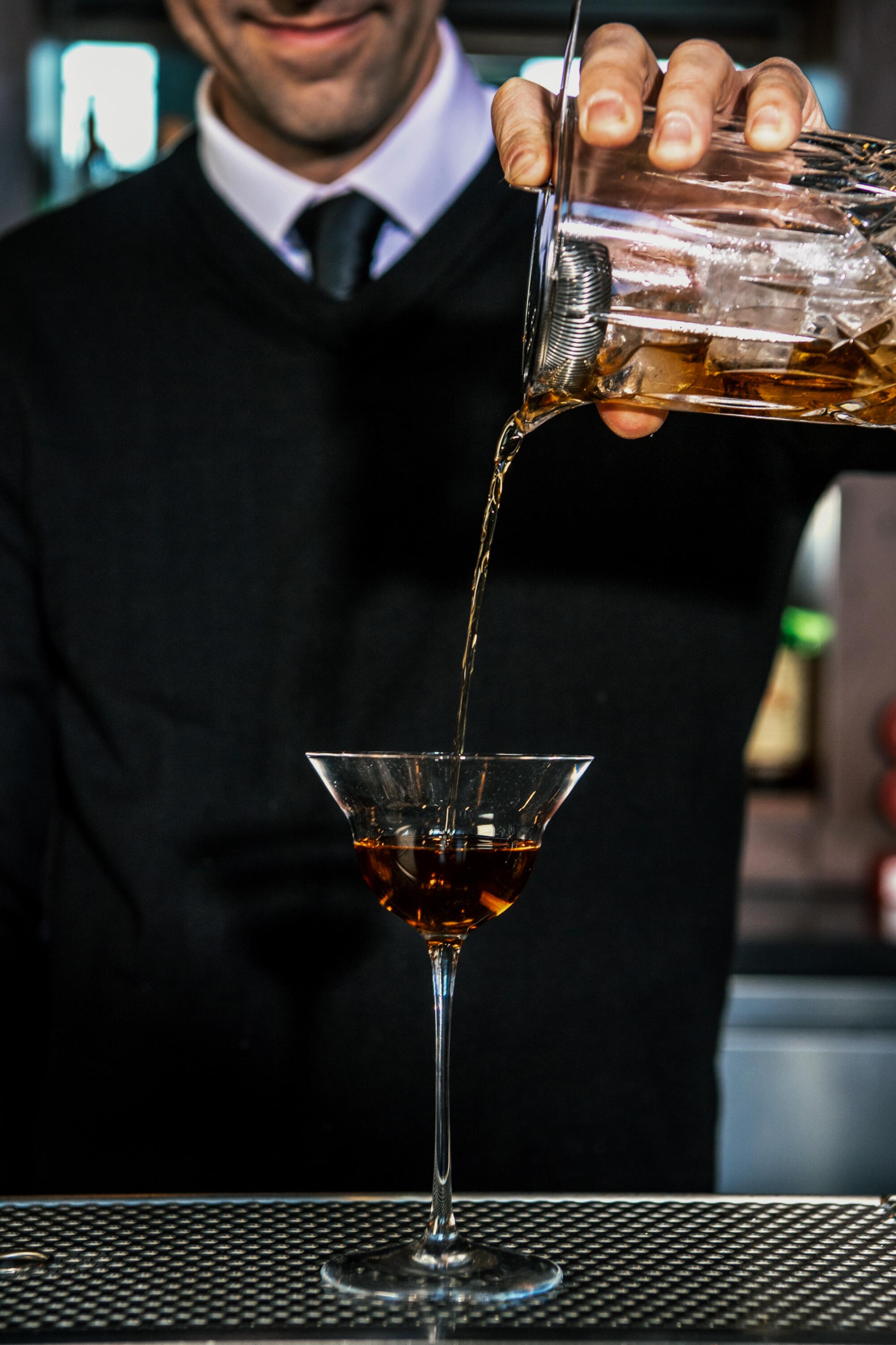
More to Read
Eat your way across L.A.
Get our weekly Tasting Notes newsletter for reviews, news and more.
You may occasionally receive promotional content from the Los Angeles Times.
